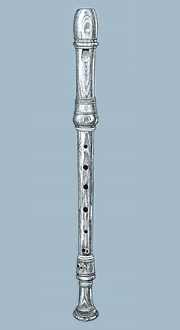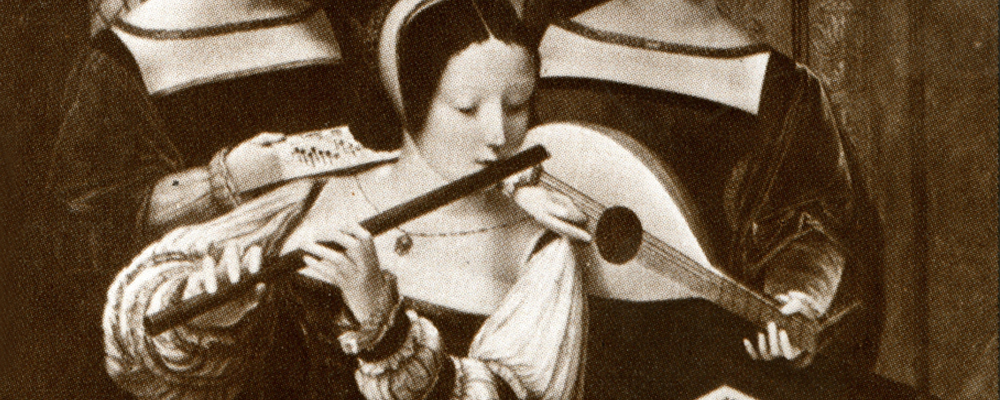The origins of the Flute
The birth of the flute
The first flutes were more like recorders
Transverse flutes made out of animal bones were used in Europe in the Paleolithic era. These instruments can certainly be regarded as the ancestor of the flute. However, it was not until the sixteenth century during the Renaissance period that the prototype of the flute that plays such a prominent role in the modern orchestra first emerged and came into widespread use.
The term "flute" was originally applied both to pipe instruments held sideways and pipe instruments held vertically. Thus, the vertically held recorder was also called a "flute." Indeed, up until around the middle of the eighteenth century (the era of Baroque music), the word "flute" was commonly used to describe the recorder. To distinguish the transverse flute from the recorder, it was referred to in Italian as the flauto traverso, in German as the Querflöte, and in French as the flûte traversière-all of which mean "sideways held flute."

Baroque era recorder
First key added in the latter half of the seventeenth century
Various refinements have been added to the flute since the Renaissance period.
Early flutes did not feature keys. Flutes in the Renaissance period were of extremely simple construction, consisting of a cylindrical body with an embouchure hole (mouthpiece) and seven finger holes. They could also only produce certain semitones.
In the latter half of the seventeenth century, flutes with a conical body and a single key attached began to appear. With this mechanism, for the first time virtually all semitones could be played on the flute. Today this instrument is known as the "baroque flute."

Baroque flute
Design perfected by Theobald Boehm!
Theobald Boehm, the German wind instrument manufacturer, demonstrated a revolutionary new type of flute at the Paris Exhibition of 1847. This flute had a metal tube with numerous keys attached. With earlier flutes, it had been difficult to even get a note out of them, and the intervals between the notes had been variable. Boehm's instrument was a dramatic improvement, however, and overcame these shortcomings.
With his major refinements, Boehm essentially created the modern-day flute.

